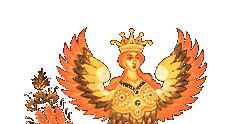The Kizhi architectural museum is located on ancient lands, where heathen rites were held. The word "kizhat" in Karelian, which were the original inhabitants of the islands, means "games." The Kizhi folks' forebears were migrants from Novgorod. In the tenth and eleventh centuries they began developing the northern part of Russia, populated by the Finn-Ugoric tribes.
They were irresistibly drawn to the bounty for fur-bearing animals, the numerous lakes that abounded with fish, the iron ore-rich soil, and by the convenient access of the northern seaways.
In the twelfth and thirteenth centuries, the lands of Southern Karelia fell into the hands of the Novgorod Feudal Republic. The "Novgorodians" implemented christianization as one of the means of enhancing their influence on the local population. The first mention of mass baptism of Karels was made in the year 1227, and later in 1478 the Kizhi lands joined the Dukedom of Moscow.
The small Kizhi Islands were well populated. Nine villages were located on the main island, which was seven kilometers in length. Of the old Kizhi villages, only two have survived to this day--Yamka and Vasilyevo.
During the course of history, there were no more then two or three houses in the small village of Vasilyevo, while in the village of Yamka there were no less than ten houses.
In the 1930's, the state collective farm "Northern Spark" was organized on the Island. Between 1941 to 1944 the Island was occupied by Finnish troops, and many local inhabitants were relocated to the Petrozavodsk concentration camps. No active military operations took place although the Finns suffered dearly from Partisan attacks.
Highlighting the Kizhi Islands, two churches, The Church of the Transfiguration of our Savior and the Church of the Intercession, were first mentioned in the "Pistsovaya Kniga" chronicles in 1496. Both of these churches were rebuilt several times over the years and are now preserved in their original wooden splendor of the seventeenth century. "The Transfiguration" church, decorated with twenty two "onion dome" cupolas, held services during the warmer seasons of the year while "The Intercession," which was heated, held services during the severe winter months.
The sacred land of the Kizhi Islands nowadays attracts thousands of tourists from all over the world.
One should visit the Kizhi Islands to appreciate its enchanting medieval atmosphere. It is well worth a trip from St. Petersburg, or Petrozavodsk, the capital of the Karelian Republic, where it can be reached by ship.
Composed and translated by
Michael I. Marinchenko
|



